By Victor Caneva
My first exposure to the Giordano Cottur path was during a passeggiata with some dear Triestini friends. After lunch, we left their apartment and hopped on the trail, named after a beloved Triestino cycling figure.
Our friends said they loved having the track nearby for peaceful neighborhood walks and added that the path stretched from San Giacomo below all the way up to Carso. Needless to say, my curiosity was piqued and I committed to return as we took in a blazing sunset from a scenic bend in the route.

Due to the bountiful cornucopia of “surprise” that is 2020, my plans to explore the path were postponed. Eventually, I decided it was time to finally tackle the path on a cool September morning.
Making my way to the trailhead, located just to the southeast of the bustling center of San Giacomo, I read some of the very informative signage located at the trail’s inception. Although the placards contain a wealth of knowledge about the trail (including an English translation!), the elements have unfortunately rendered parts of the text illegible… so I figured I’d help you out.
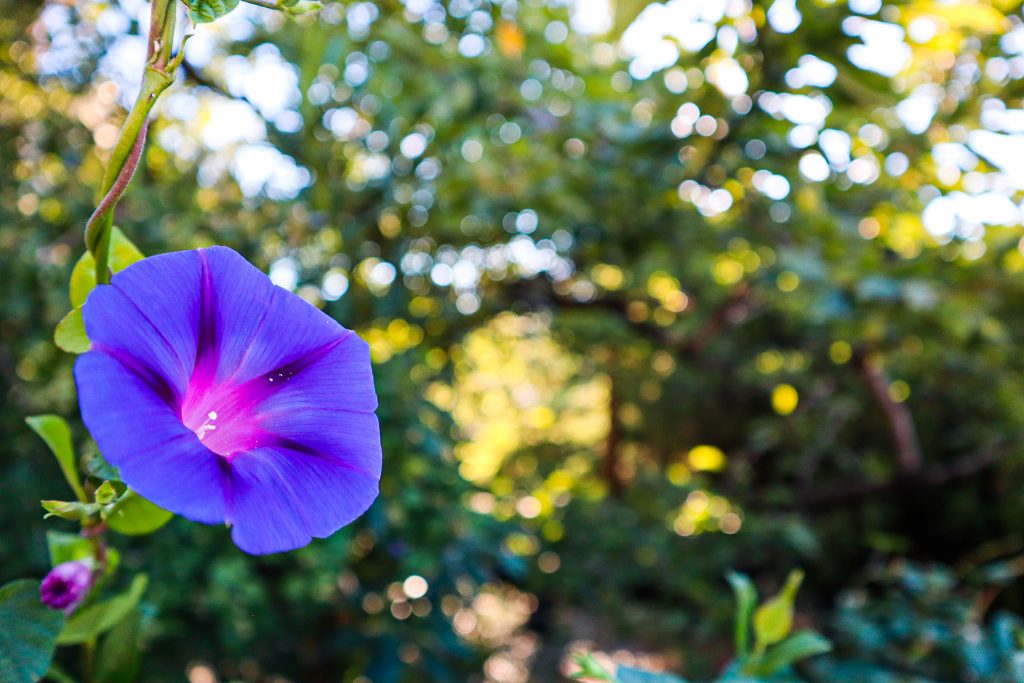
The Cottur path is more than a just 12 kilometer thoroughfare allowing cyclists and pedestrians to traverse large swaths of the city without tangling with vehicular traffic. It also represents a thoughtful restoration and repurposing of a historic railway. The trail was built on the route of the Trieste-Erpelle (Hrpelje in Slovenian) railway, which connected Trieste with the Pola – Divaccia line, linking the southern end of the Istrian Peninsula to connections further north in the Austro-Hungarian Empire.
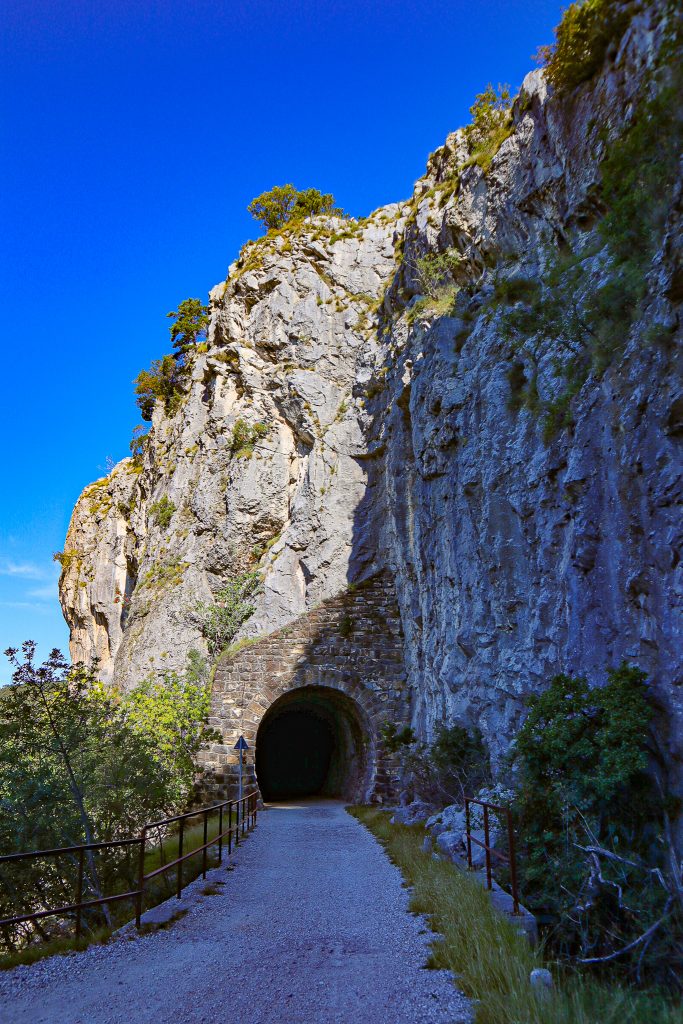
Opening in 1887, the railway was once instrumental in transporting local wine to points scattered throughout Austro-Hungary. Changing geopolitics and economics eventually eroded the line’s importance until the railway ceased operations in 1959 and was disassembled in 1966. Today, the multiple tunnels, metal bridges, viaducts, and old railway structures will intrigue those with an interest in industrial history.

Inaugurated in 2010, the Giordano Cottur path now officially runs from the site of the old Campo Marzio station in San Giacomo and climbs over 300 meters to the site of an old tollbooth at the carso village of Draga Sant’Elia. If you’re looking for an international experience, however, it is possible to continue to the trail’s conclusion in the outskirts of Mihele, Slovenia.
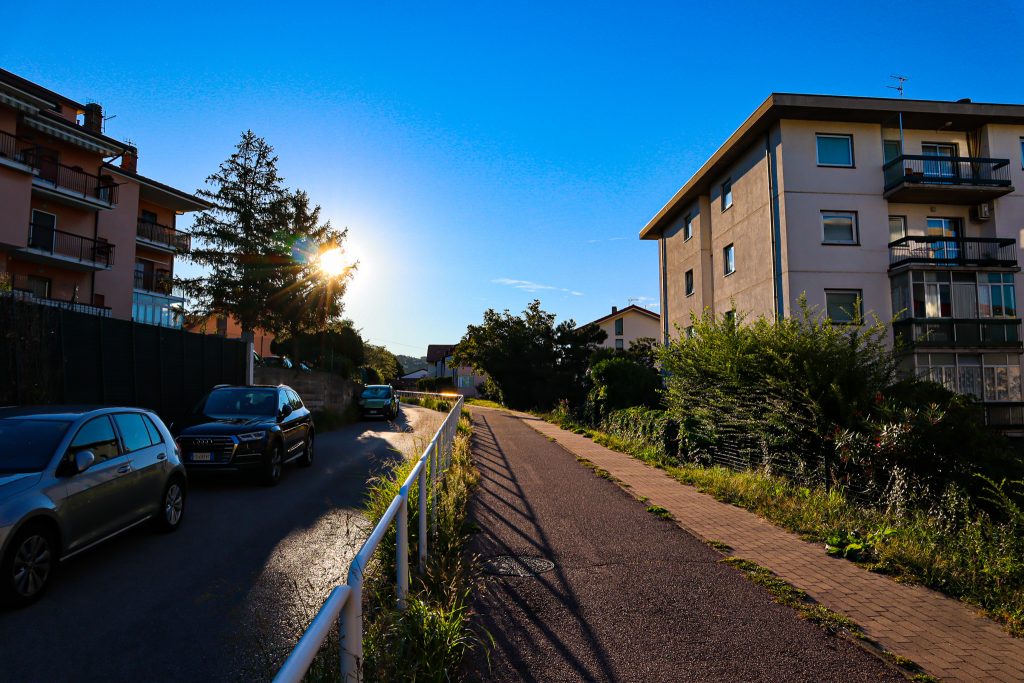
Leaving the trailhead, pale heavens morphed into deep blue as the sun began its slow climb into the Trieste sky. The path wove between apartment buildings in San Giacomo and I sporadically passed Triestini out for a morning jog or walking their canine companions. In the more densely populated parts of the trail from San Giacomo to Altura, there were many spots for locals to hop on or off, providing them with a quiet place for a short stroll.
As the path passed just to the south of the Giardino di Villa Sartorio, the atmosphere began to change. Constant buildings gave way to increasing green areas. Suddenly, a break in the foliage revealed I was passing vineyards. Beyond the grapevines, dark green cypress trees reached up from the gardens of a large cemetery while, further afar, the sea framed the scene in blue.
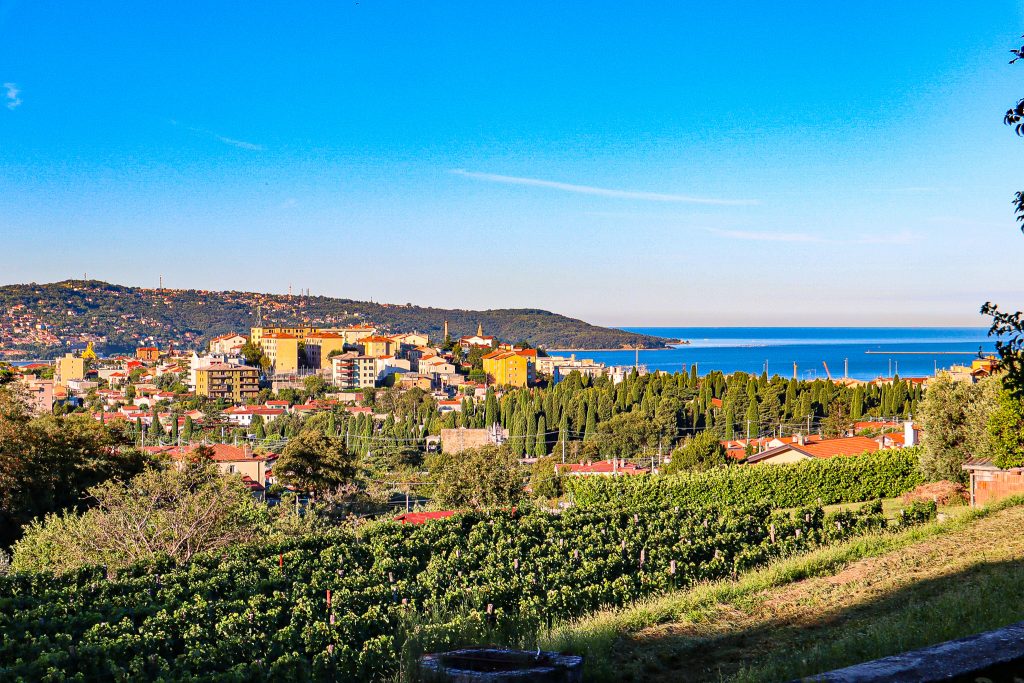
The Cottur path is paved until it reaches Altura, just below the towers of Cattinara Hospital, where it becomes a gravel trail. My wife was recovering from surgery at the hospital and I gestured like an idiot on an old bridge below Cattinara while we spoke on the phone.
Chances to visit were very rare with Covid precautions, so I did my best to try to wave to her, but alas, we were kept apart by an architectural feature. I hope some of the passing cyclists were entertained.

After Altura, following the path began to feel more like a hike than a walk. What began as a very urban stroll was now a trek through forest and soon I encountered my first historic tollbooth, which appeared to have been repurposed into a private residence.
A little further and I arrived at the Chiusa tunnel, the longest of the five tunnels on the route. The tunnel is equipped with floor lighting to make walking or riding through the dark relic safer and a little less spooky.
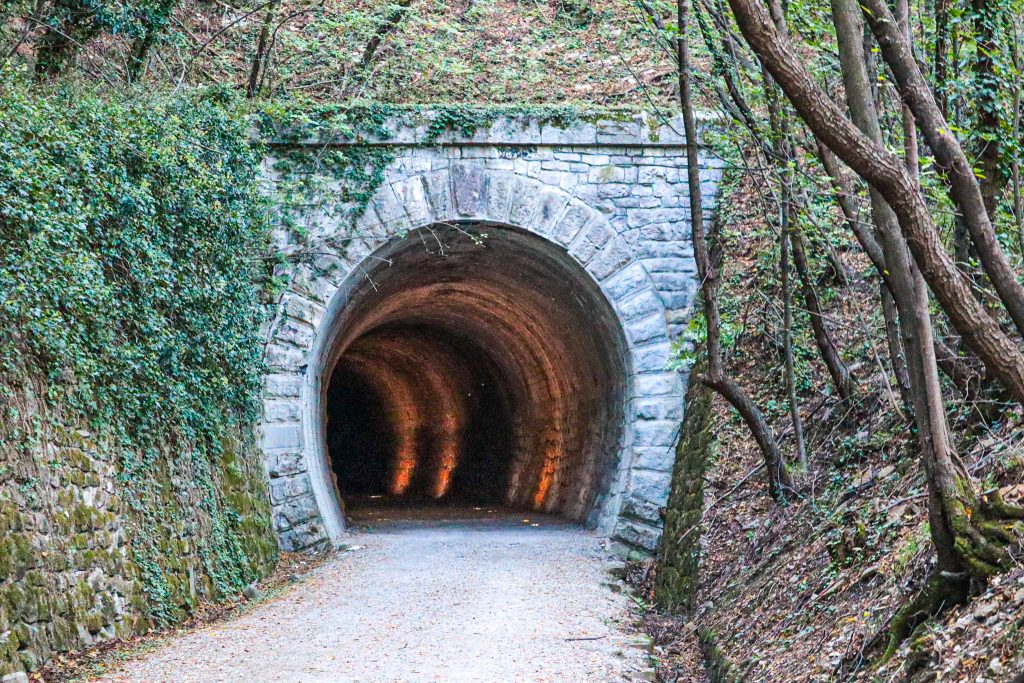
Continuing on in weather I feel guilty telling my friends in Florida about, I arrived at the largest of the old railroad buildings on the route, the Sant’Antonio-Moccò station, which has also been converted into a private residence. I couldn’t help but imagine what it would be like to live in a piece of history on an increasingly scenic route.

I wound closer to the Val Rosandra Natural Preserve and the vegetation began changing.
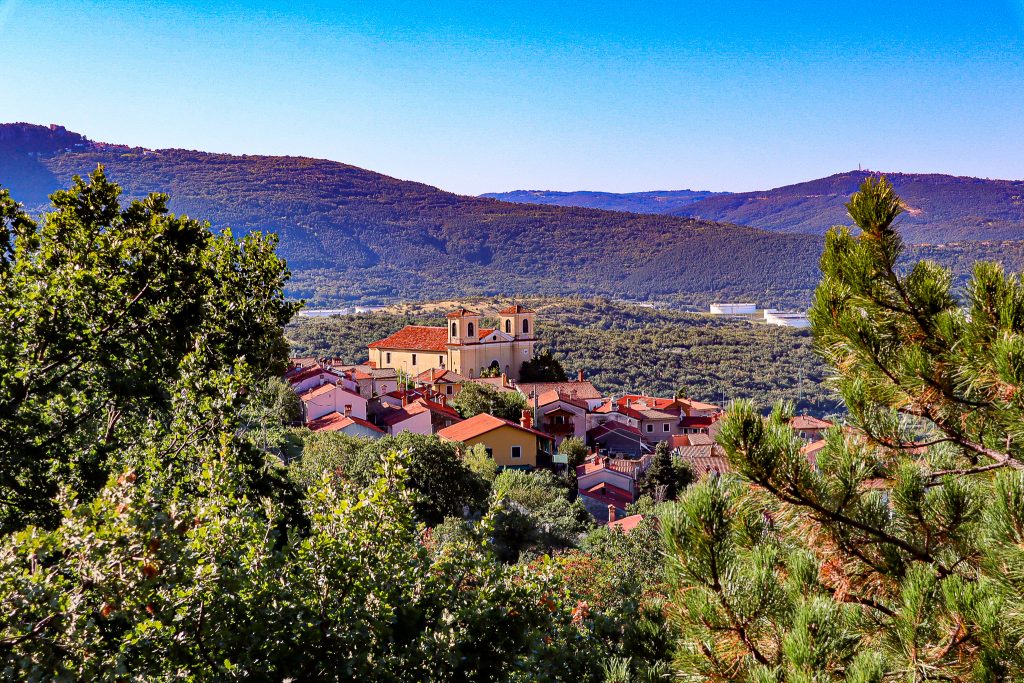
The rising trail now cut through exposed rock near the apex of the Carso. Historic tunnels became increasingly dramatic, piercing through stony cliffs with the odd tree clinging to sparse pockets of soil.

Appearing to hang on the rocks set in the slope opposite the Val Rosandra Gorge below, the ancient church of Santa Maria in Siaris immediately captured my imagination.
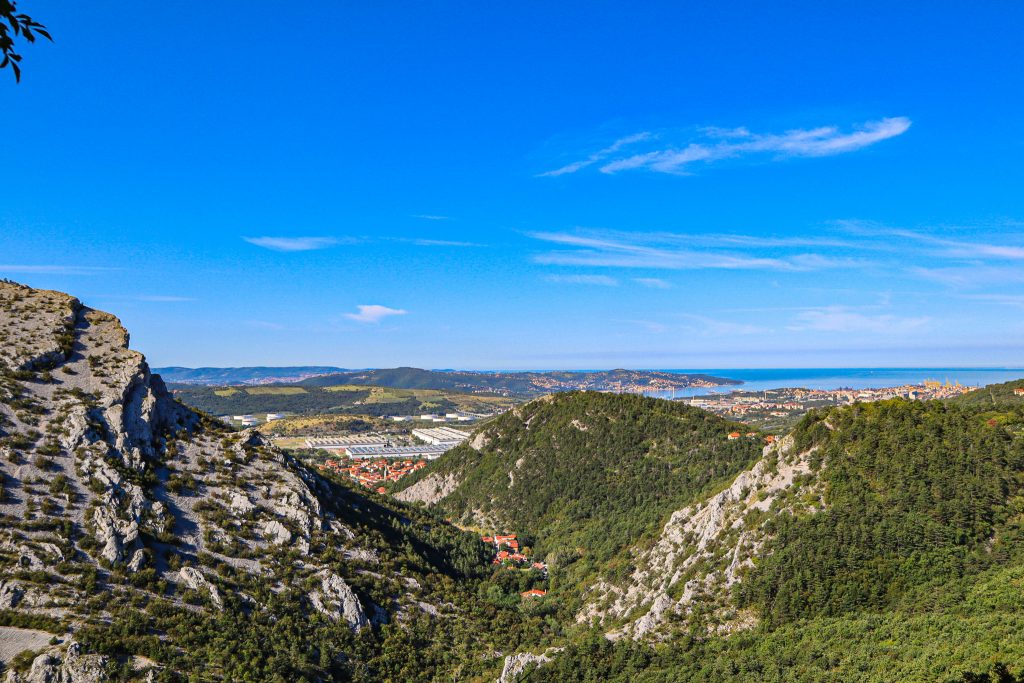
Likely hailing from the twelfth century, a penance of walking 12 kilometers barefoot to this remote place of worship was prescribed for blasphemers in medieval times – ouch! Additional lore regarding Santa Maria in Siaris claims that Charlemange constructed the church, desiring to be buried there.
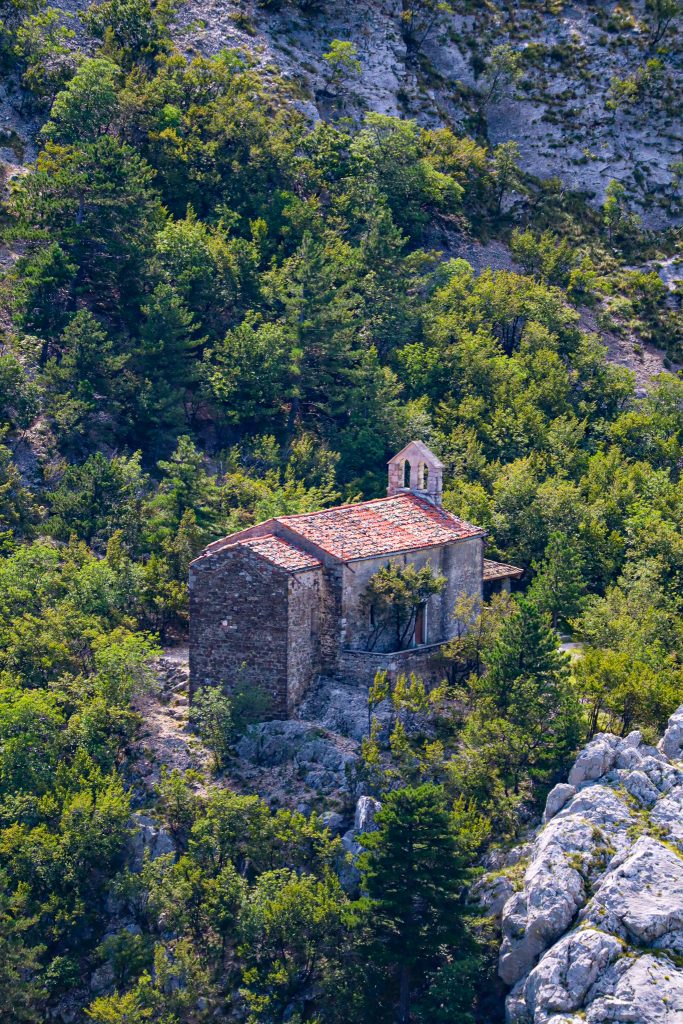
Following this stretch of trail boasting views of Val Rosandra and the Adriatic, the forest again swallowed the path and I arrived at the official end of the trail in Draga. Knowing that it was only a few more kilometers to the Slovenian border, I decided to keep on trucking along.
Shortly after unceremoniously crossing into Slovenia, I was met with the sound of thousands of humming bees. Someone had left a festively colored apiary along the path. Thankfully the bees were more interested in meeting honey production quotas than they were in me and I continued on to the trail’s end in Mihele, Slovenia.

I rewarded myself with a mixed grill lunch and beer at a brewery in Mihele, celebrating yet another cross-border journey by popping ćevapčići and canceling out any calorie burn I had achieved earlier in the morning. As I began my trek home, I really wished I had chosen to cycle.
I could have hopped back on the trail and coasted effortlessly back down to San Giacomo. Once home, nursing abused feet, I learned that I had probably walked about twenty miles. My feet may not have been happy, but the rest of me was thrilled to have conquered the Giordano Cottur Path.

























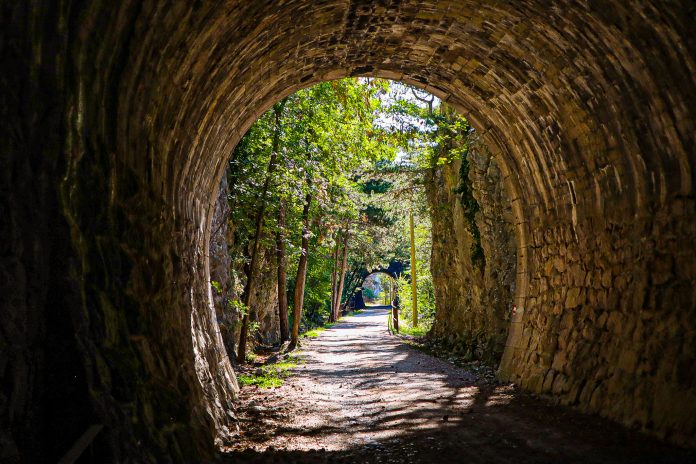




Thanks Victor that was great. I’m off to cycle for charity from Milan to Rome. 24th sept. On the 1st Oct I am heading to Trieste. Bring a Dubliner i wanted to see the city associated with Joyce. So I’m only there sun and mon back tue. Your entertaining and informative article has put an idea into my head. Nice short but challenging cycle to Mehile. Lunch and free wheel back. Hope the weather gods are feeling beneficent.
Good luck
Liam_fitzgerald@hotmail.co.uk
Cool